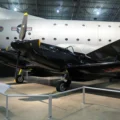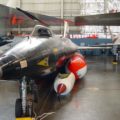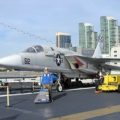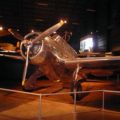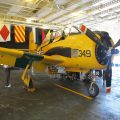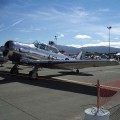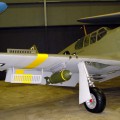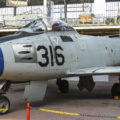A Észak-amerikai F-100 Super Sabre was an American supersonic jet fighter aircraft that served with the United States Air Force (USAF) from 1954 to 1971 and with the Air National Guard (ANG) until 1979. The first of the Century Series of USAF jet fighters, it was the first USAF fighter capable of supersonic speed in level flight. The F-100 was designed by North American Aviation as a higher performance follow-on to the F-86 Sabre air superiority fighter.
Forrás: Észak-amerikai F-100 Super Sabre a Wiki-n
További információ:
A Észak-amerikai F-100 Super Sabre was a supersonic jet fighter that served with the United States Air Force (USAF) from 1954 to 1971 and with the Air National Guard (ANG) until 1979. It was the first USAF fighter capable of breaking the sound barrier in level flight. The F-100 was designed by North American Aviation as a higher performance follow-on to the F-86 Sabre air superiority fighter.
The F-100 was originally intended as an air superiority fighter, but it also performed various other roles such as close air support, interdiction, and nuclear strike. The F-100 was equipped with a single Pratt & Whitney J57 turbojet engine that produced up to 17,000 pounds of thrust with afterburner. The F-100 had a maximum speed of over 860 miles per hour and a combat radius of about 400 miles. The F-100 could carry up to four 20 mm cannons and a variety of bombs and rockets on its six underwing hardpoints.
A F-100 kiterjedt harci szolgálatot teljesített a vietnami háború alatt, ahol több mint 360 000 bevetést repült, és a konfliktusban az USAF repülőgépei közül a legmagasabb veszteségarányt szenvedte el. Az F-100 számos más konfliktusban és válságban is részt vett szerte a világon, mint például a kubai rakétaválság, a Dominikai Köztársaság beavatkozása és a hatnapos háború. Az F-100-at fokozatosan felváltották az újabb vadászgépek, mint például az F-4 Phantom II és az F-105 Thunderchief az 1960-as években és az 1970-es évek elején. Az utolsó működőképes F-100-asokat az ANG 1979-ben vonta ki.



